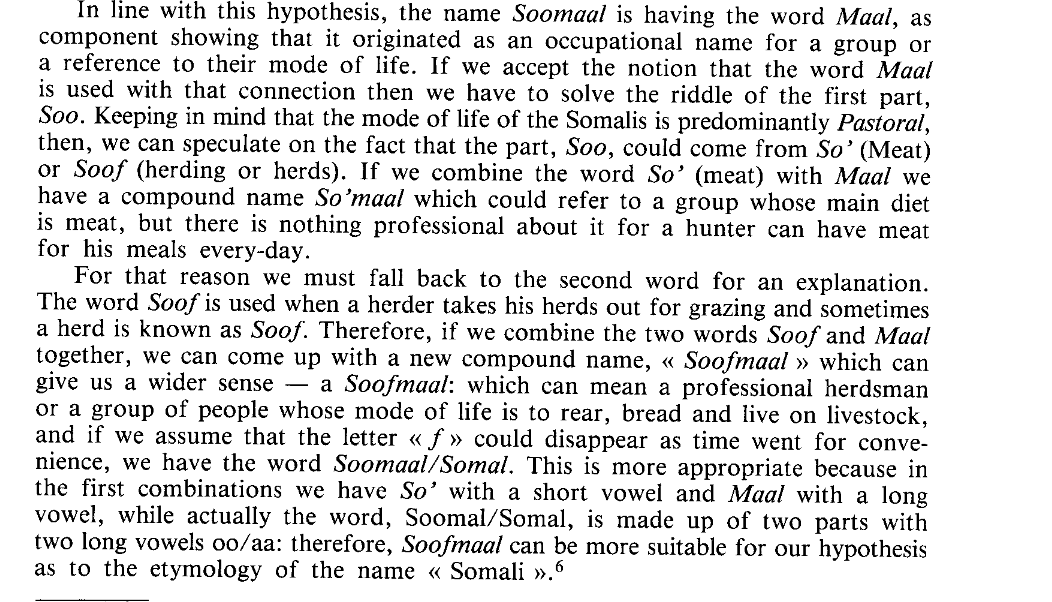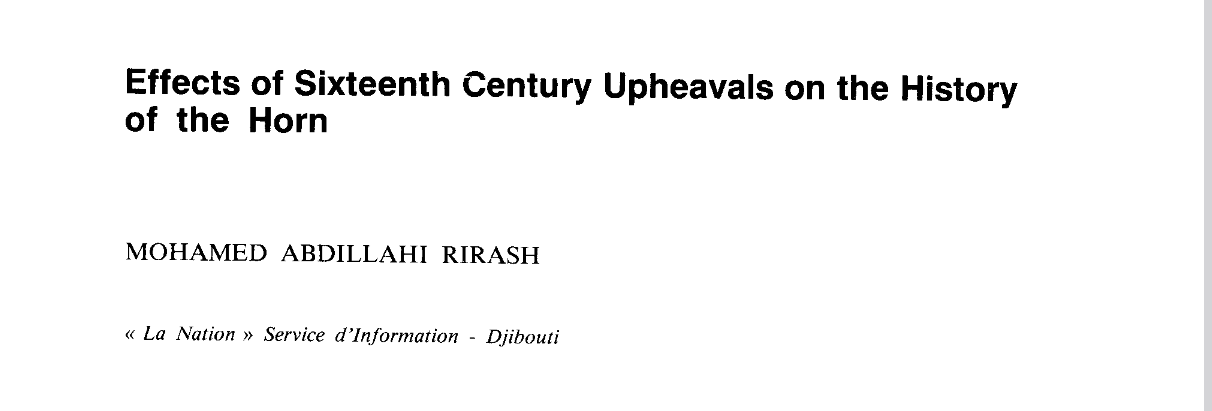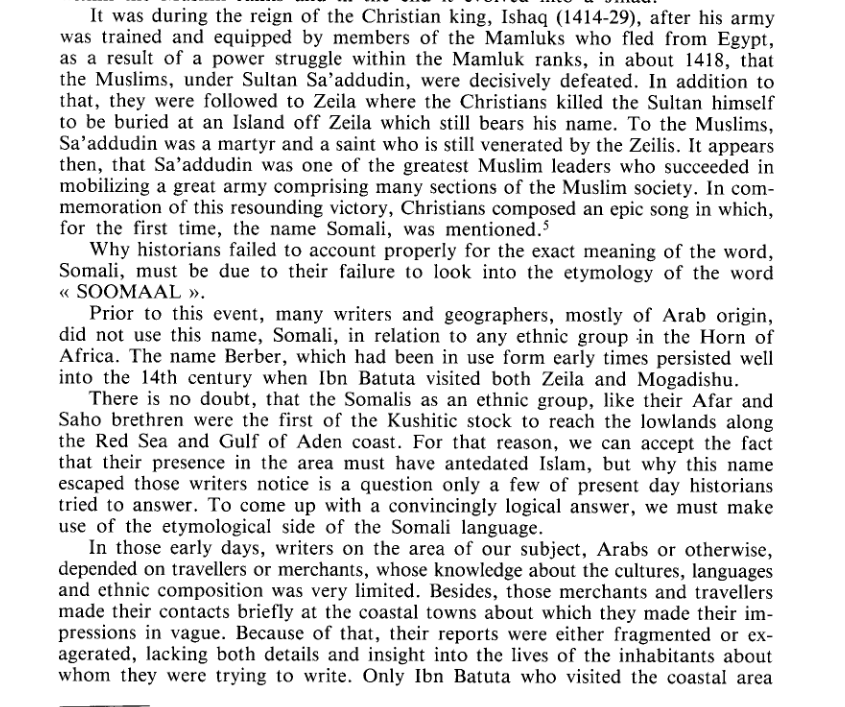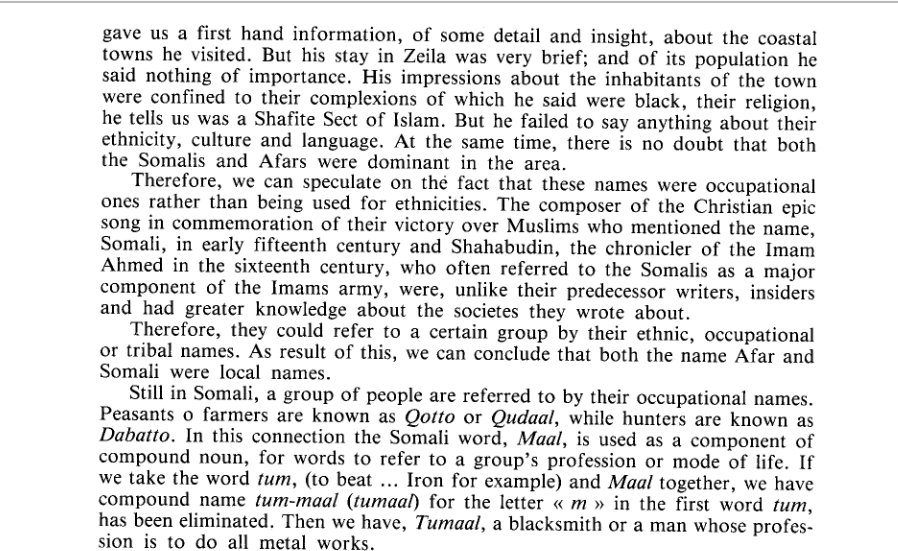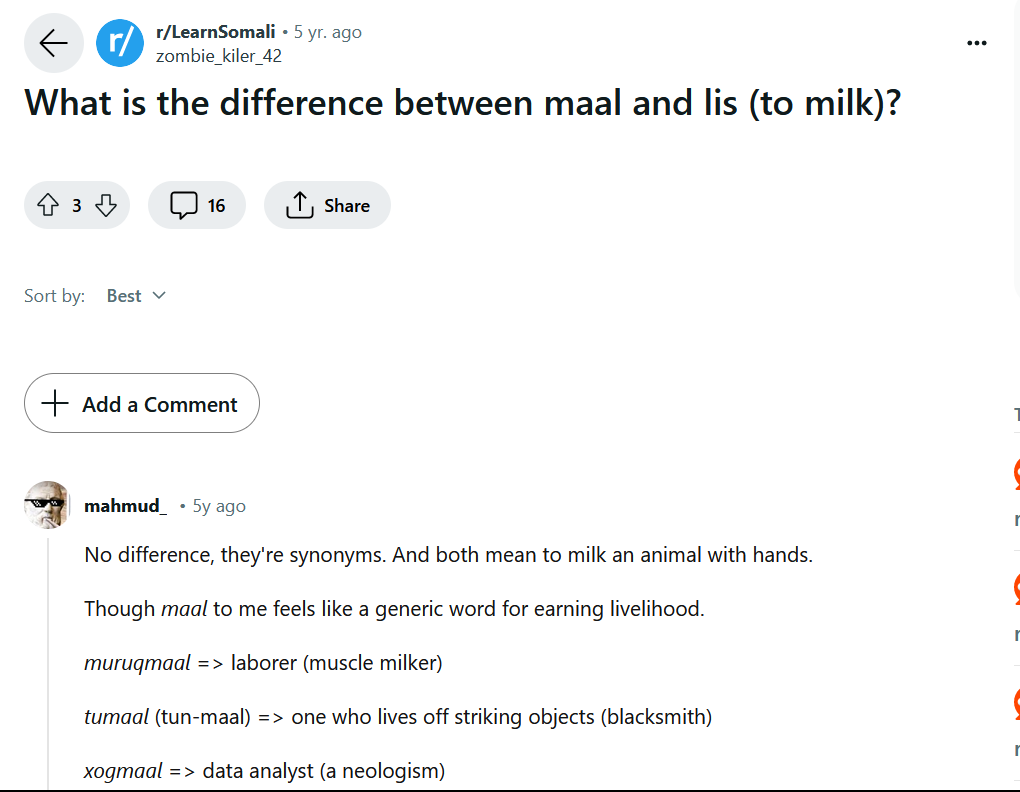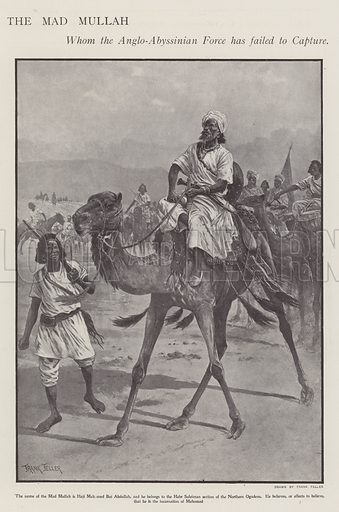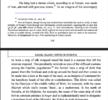Idilinaa
VIP
how do you explain kitab Al Farayid and the other Harari texts from the remote period marka? Are you going to say the Harari language predated the Harari people, and there was Harari language without Harari people
View attachment 321714
Have you researched about the other names for the Harari people like Adare before dismissing their identity?
There is a difference between the "earliest visitor" and the "the earliest person to write about a city"
Explain what? All i am saying it does not prove anything. No mentions of the city of Harar, Harari people or their history. Nor any mention of Adare which some linguists are certain is a Somali name.
Only thing it shows is that a language pre-cursor to the one spoken by the Harari was used i writing an Islamic treaty. Harari being pretty much an extension speech of East-Gurage who are mentioned to be non-actors in Futuh and non-Muslim.
Mentioning Somali Ajami was not written until the 19th century is meaningless, because it says 1 of two things either they never felt the need to use arabic to transcribe the Somali language much (hence liturgical) or just examples of it haven't survived.
Somalis would document islamic/quranic treaties/grammar books like that in Arabic and sign it with their Family/clan names. Like this example
The Surviving Manuscript Written By A Somali From 1692
Last edited:


